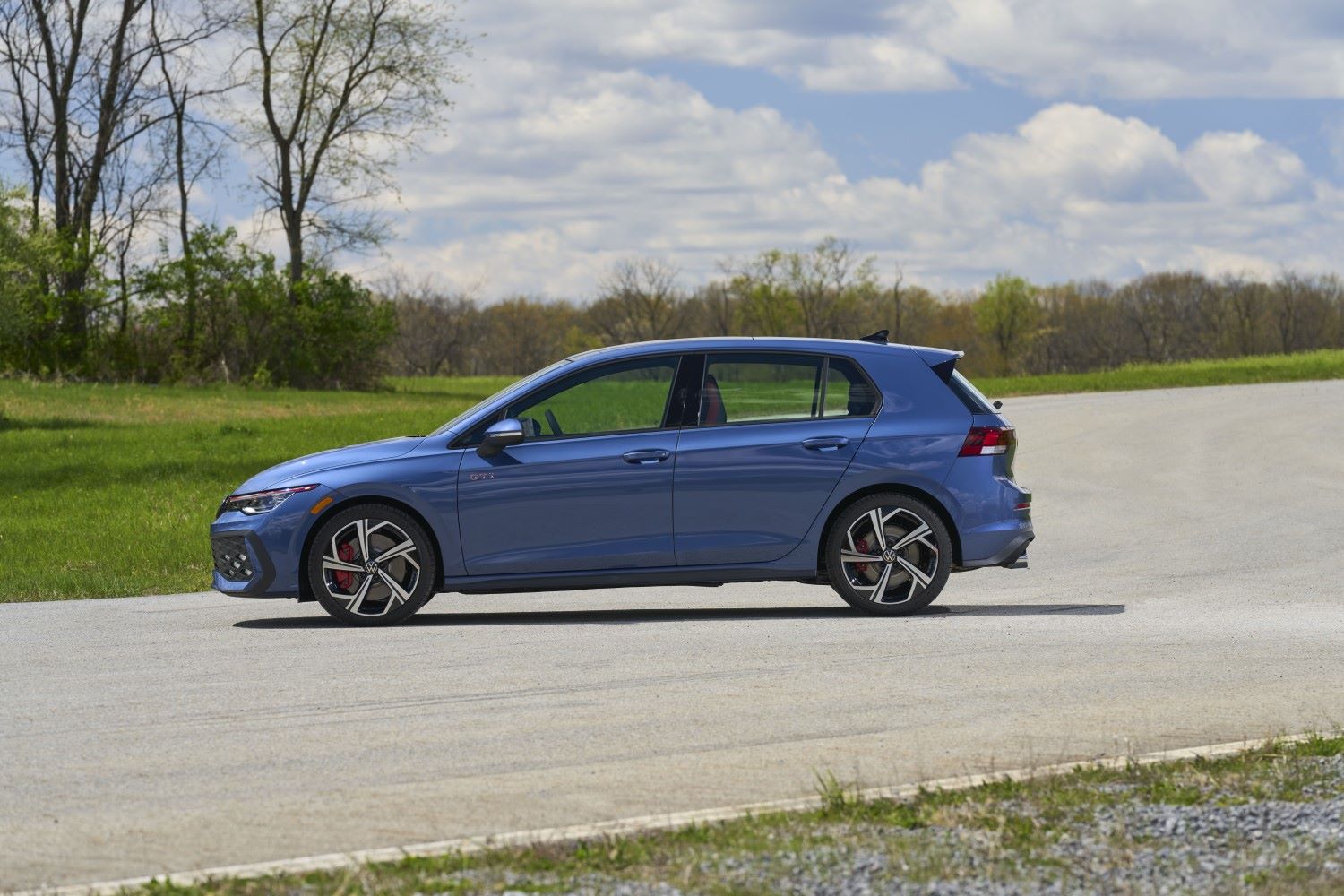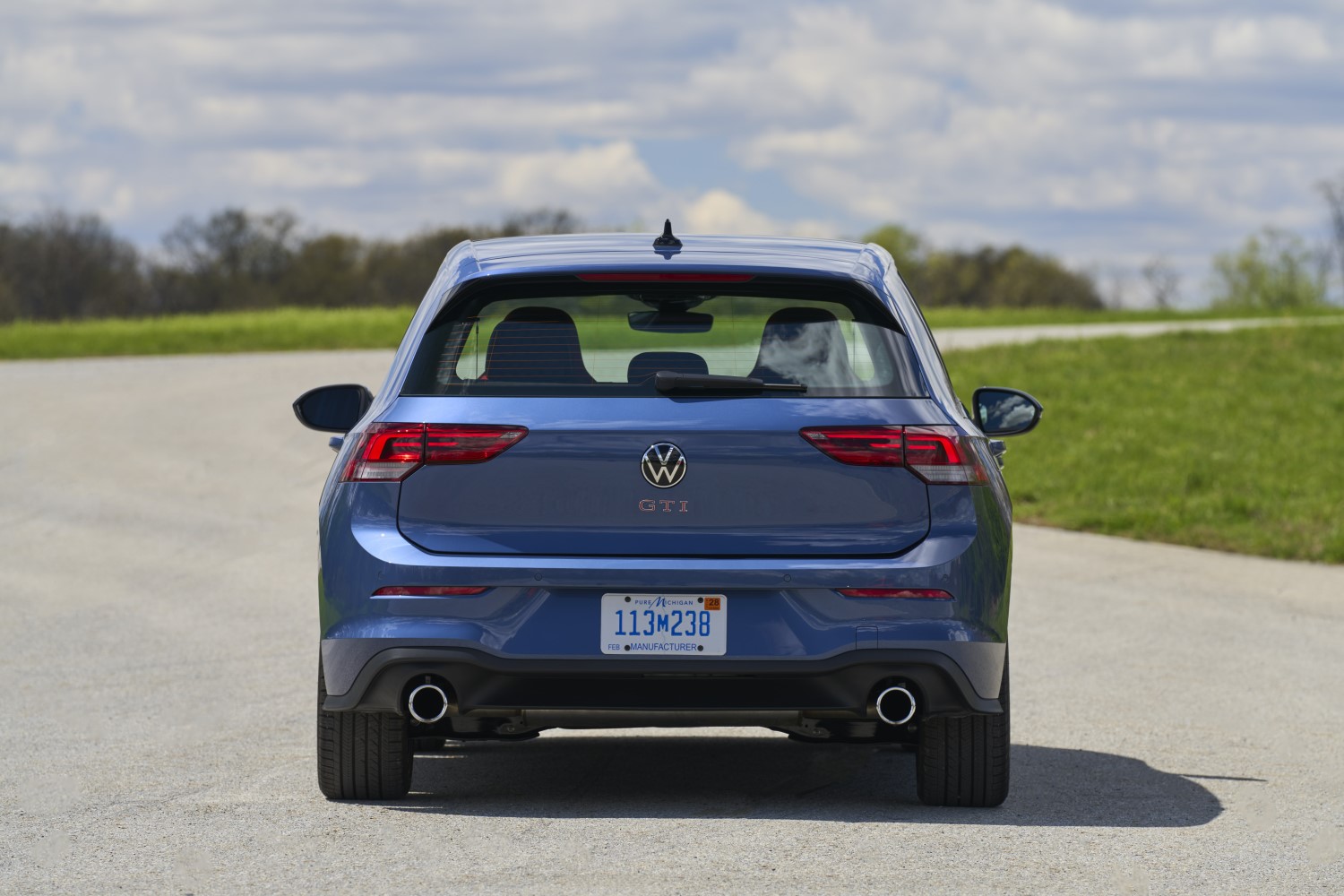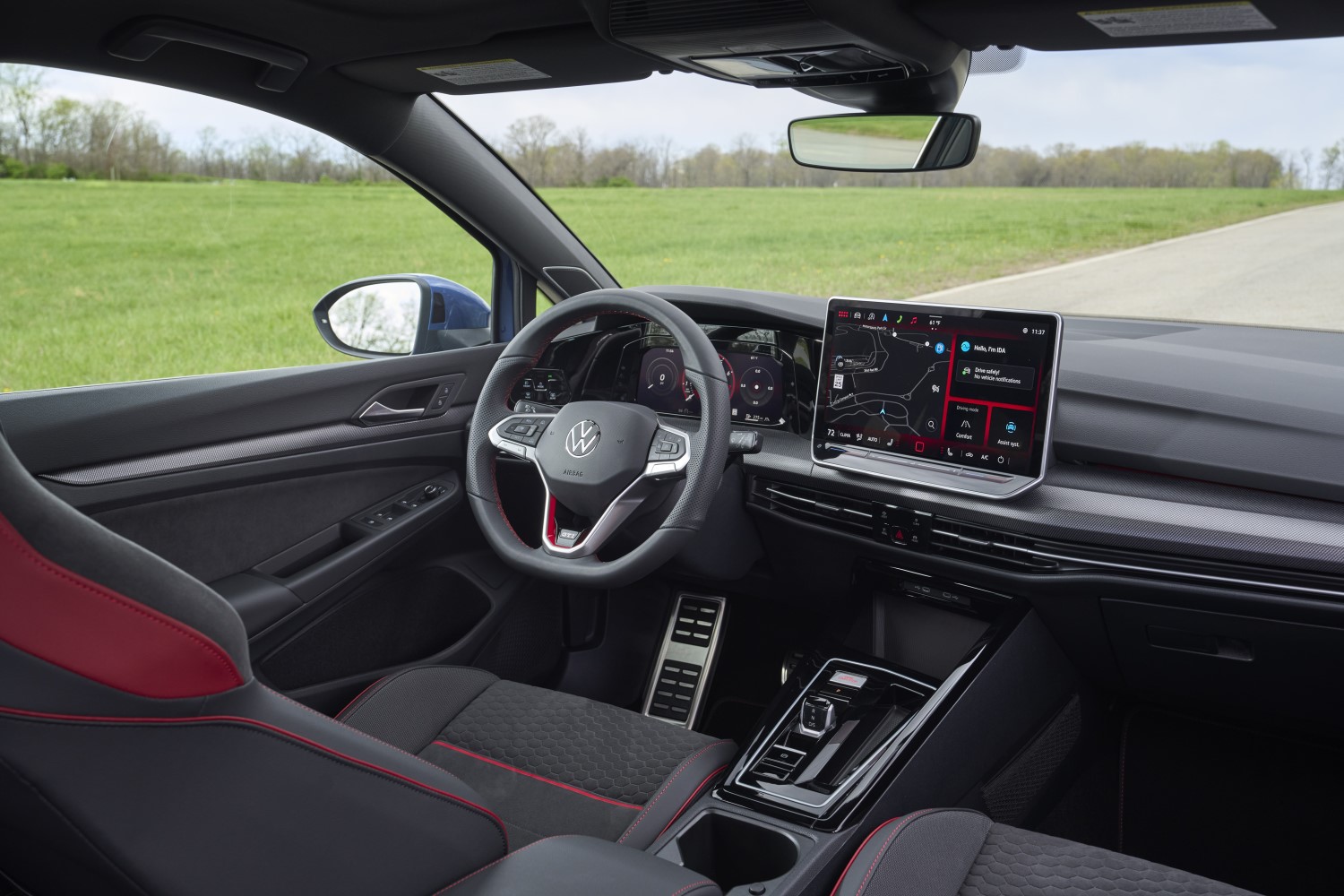Automotive News: We test drive the 2025 Volkswagen Golf GTI
For more than four decades, the Golf GTI has been the benchmark high-performance hatchback. Over eight generations, the formula of style, refinement, practicality, and spirited performance has remained consistent. And as with its predecessors, the 2025 Mk8 GTI continues the tradition with the same DNA and feel.
The eighth-generation Golf GTI is again based on the MQB modular transverse architecture. While the wheelbase remains unchanged from the previous generation, at 103.6 inches, the car is now longer, at 168.9 inches.

Each body panel on the GTI is new with lots of attention to aerodynamics, including aero-including exterior mirrors, a bespoke GTI roof spoiler, extensive underbody paneling, and aerodynamically refined wheelarch linings. The new car has a drag coefficient of 0.31 and a reduced lift.
Exterior
The exterior design of the 2025 Golf GTI looks very close to the previous cars. The previous generation was a very attractive car and there is no reason to make drastic changes. An illuminated light bar is now standard and is met with an illuminated VW logo.
The GTI comes in three trim levels, and the S and SE models come with 18-inch wheels with 225/40 all-season tires as standard. The top-of-the line Autobahn models feature a new 19-inch wheel design inspired by the Mk5 Golf GTI’s classic “horseshoe” wheel and 235/35 summer tires.

Interior
The GTI interior is just as you would expect. There is 91.9 cu-ft of interior room, along with 19.9 cu-ft of luggage space. The versatility of the hatchback is unbeaten and is one of the reasons that the GTI is a legend.
The new center 12.9 inch stack display is great and has large easy to read buttons. It is quick to respond, a problem that affected the older cars. But with very few actual buttons, the new infotainment system is out of place in a car like the GTI, in our opinion. We would prefer simpler controls without having to navigate through the complex menus just to change the radio station. Maybe I just miss my 1983 GTI which was such a simple and honest car. Volswagen would sell a lot more cars if the base S model GTI was less expensive and was a very base model without the luxury car touches.

As it is, all trims have tons of standard features, including Climatronic Touch automatic climate control, automatic rain-sensing windshield wipers, automatic headlights, auto-dimming rearview mirror, LED reading lights, push-button start, and Volkswagen Car-Net with Wi-Fi capability.
There are two stereo configurations for GTI, the S models get a seven speaker system while the SE and Autobahn feature the Harman Kardon audio system with 480 watts, nine speakers including a subwoofer, and a 12-channel amplifier.
Engine and Transmission
Under the hood is the familiar 2.0-liter turbocharged and direct-injection unit, built in Volkswagen’s factory in Gyor, Hungary. The GTI’s EA888 evo4 engine displaces 1984cc and produces 241 horsepower at 5,000 rpm and 273 lb-ft of torque at just 1,600 rpm. The evo4 engine is paired with a 7-speed DSG dual-clutch automatic transmission. Sadly, the manual transmission has been discontinued, which fits the frisky character of the GTI.

The engine feels great and it pulls hard from at any engine speed. It revs quickly, and there is minimal turbo lag. The new power levels do not seem to hurt fuel economy since the EPA estimated fuel economy is 24 mpg in the city, and 32 mpg on the highway, and we regularly saw low 30 mpg numbers on the highway.
Structural
The GTI has a stamped steel body and chassis that boasts a large percentage of high-strength, hot-formed steel. This technology allows much of the chassis and body to be constructed from thinner and lighter parts without loss in strength. In the Mk8, the chassis benefits from a further increase in the use of ultra-high-strength steel and an extremely rigid aluminum subframe.
The running gear on the Mk8 GTI features several modifications designed to increase precision and driving stability over the Mk7. The strut-type front suspension has reconfigured wishbone bearings and revised damping hydraulics. The springs and buffer stops were reconfigured as well, to give a front axle spring rate 5% higher than Mk7 GTI. The multilink rear axle features similar modifications, including a new wheel mount, wishbone bearing and spring setup, as well as reconfigured auxiliary springs.
The spring rate at the rear axle increased by 15% compared with the Mk7. The damping bearings and damping hydraulics were revised as well. All GTI models come equipped with 13.4-inch front and 12.2-inch rear vented disc brakes which is plenty for a car of this size.

Conclusions
The result is a car that handles very well. Our SE model was equipped with the standard all-season tires, which really hurt performance. All season tires are bad at everything and good at nothing. But the suspension tuning is terrific, and the car is extremely neutral and can be easily balanced with the throttle. It is a car that can be driven quickly very easily by even beginner drivers. The good thing about the all season tires is that they give plenty of warning before they start to lose grip.
The base price of the GTI is $32,445 for the S model, while the SE starts out at $37,420 and the top of the line Autobahn starts at $40,880. Since mechanically, there is not much difference, we would save money and get the S model, which is a much better deal and use the extra cash to customize it to your liking. Either way, you end up with a car that is a blast to drive and feels connected to the road, which is hard to find today.
Specs and Dimensions
- Compression ratio: 9.60 to 1
- Curb weight: 1,446kg (3,188lbs)
- Engine bore x stroke: 82.5mm x 93.0mm (3.25″ x 3.66″)
- Engine displacement: 2.0 L
- Engine horsepower: 241hp @ 5,000RPM
- Engine torque: 273 lb.-ft. @ 1,750RPM
- ompressor: intercooled turbo
- Cylinder configuration: I-4
- Drive type: front-wheel
- Engine liters: 2.0L
- Engine location: front
- Fuel economy city: 24mpg
- Fuel economy combined: 27mpg
- Fuel economy highway: 33mpg
- Fuel tank capacity: 13.2gal.
- Horsepower: 241hp @ 5,000RPM
- Hybrid traction battery type: none
- Limited slip differential: electro-mechanical
- Manual-shift auto
- Mode select transmission
- Number of valves: 16
- Recommended fuel: Regular Unleaded
- Standard fuel economy fuel type: gasoline
- Torque: 273 lb.-ft. @ 1,750RPM
- Transmission: 7 speed automatic with auto-shift
- Variable valve control
- Exterior body width: 1,788mm (70.4″)
- Exterior height: 1,463mm (57.6″)
- Exterior length: 4,288mm (168.8″)
- Front headroom: 978mm (38.5″)
- Front hiproom: 1,356mm (53.4″)
- Front legroom: 1,046mm (41.2″)
- Front shoulder room: 1,420mm (55.9″)
- GVWR: 1,970kg (4,343lbs)
- Interior maximum rear cargo volume: 977 L (34 cu.ft.)
- Interior rear cargo volume: 564 L (20 cu.ft.)
- Passenger volume: 2,602L (91.9 cu.ft.)
- Payload: 420kg (926lbs)
- Rear headroom: 968mm (38.1″)
- Rear hiproom: 1,176mm (46.3″)
- Rear legroom: 889mm (35.0″)
- Rear shoulder room: 1,369mm (53.9″)
- Turning radius: 5.5m (17.9′)
- Wheelbase: 2,631mm (103.6″)
- Alloy wheels
- Four wheel independent suspension
- Front anti-roll bar
- Front tires: 225/40HR18.0
- Power steering
- Rear anti-roll bar
- Rear tires: 225/40HR18.0
- Speed-sensing steering
- Sport suspension
- Wheel size: 18″
